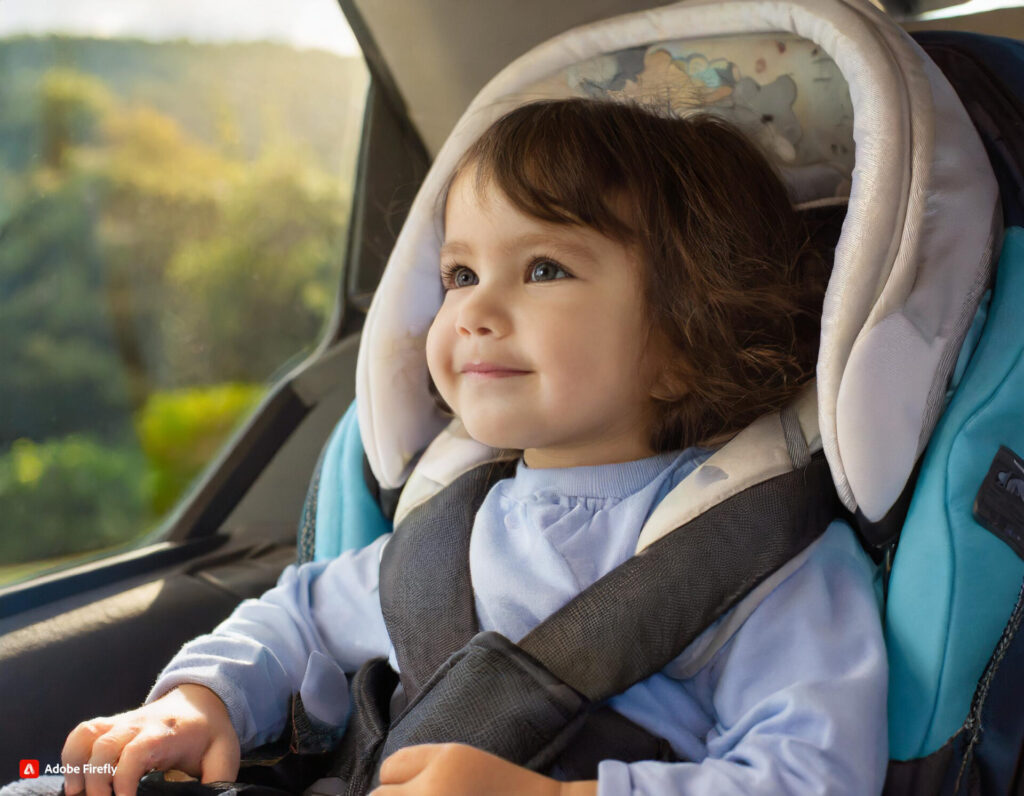Are Jeep Wranglers Safe for Babies?

I understand you’re curious to know: Are Jeep Wranglers safe for babies? Do not worry; I am here with you with a solution, and I will answer all of your queries and share my personal experience with you to keep your little one safe. Jeep Wranglers may not be the safest choice for transporting babies. While they have some safety features, such as airbags and child seat anchor points, their rugged design and off-road focus can result in a harsh ride. It’s advisable to opt for a vehicle with a smoother, more family-oriented ride for baby transportation.
Is the Jeep Wrangler safe for babies?
Jeep Wranglers are generally safe for babies, but when it comes to baby safety, Jeep Wranglers are not safe for little ones. Compared to other vehicles, there are some important considerations:
- Off-Road Design: Jeep Wranglers are designed primarily for off-road adventures and extreme driving activities As such, they are not the safest option for babies.
- Low Safety Ratings: The Jeep Wrangler has one of the lowest safety ratings. For instance, in a Euro NCAP report, it received only one star in safety, indicating a low level of occupant protection in crashes compared to other vehicles with higher safety ratings.
- Compact Rear Seats: Wranglers have rear seats that are fairly compact in size, which may not accommodate all large child safety seats available today.
- Lack of Standard Side-Curtain Airbags: Wranglers do not come equipped with standard side-curtain airbags, which provide additional protection in side-impact collisions.
Jeep Wrangler Safety Features: An in-depth Look
The Jeep Wrangler, known for its iconic design and off-road prowess, often sparks questions about its safety, especially when considering passengers like young children. While it might not be the safest option for every family, understanding its safety features is crucial for making an informed decision.
Standard Safety Features:
- High-Strength Steel Body: The Wrangler’s foundation is built with high-strength steel, offering improved rigidity and impact protection for occupants.
- Advanced Multistage Front Airbags: These airbags deploy with varying forces depending on the severity of the collision, providing targeted protection for the driver and front passenger.
- Supplemental Side-Mounted Airbags: Located in the front seats, these airbags offer additional head and torso protection in side-impact crashes.
- Antilock Braking System (ABS): This system prevents wheel lockup during hard braking, allowing the driver to maintain control and steer out of potential hazards
- Electronic Stability Control (ESC): This system helps maintain vehicle stability by applying individual brakes and reducing throttle when it detects a loss of control.
- Tire Pressure Monitoring System (TPMS): This system alerts the driver if a tire is underinflated, which can impact handling and safety.
Optional safety features (depending on trim level):
- Blind Spot Monitoring and Rear Cross Path Detection: These systems use radar sensors to warn the driver of vehicles approaching from behind or in blind spots.
- Forward Collision Warning and Automatic Emergency Braking: This system can sense an impending collision and warn the driver, or even apply automatic braking to mitigate the impact.
Adaptive Cruise Control: This system maintains a set distance from the car ahead, automatically adjusting speed to maintain traffic flow.
Additional Safety Considerations:
- Side Curtain Airbags: Not standard on all models, these airbags deploy from the roof to protect occupants in rollover and side-impact crashes. While recently introduced as an option, their absence in older models raises concerns.
- Lower Side-Impact Ratings: The Wrangler has received lower ratings in some IIHS side-impact crash tests compared to other SUVs. Consider this if side-impact protection is a major concern.
- Open-Air Design: With the top and doors off, passengers are exposed to elements, potential falls, and loose objects. This necessitates extra caution and door handle usage.
Stroller and Car Seat Accessibility in Jeep Wranglers
The Jeep Wrangler’s unique design, with its removable top and doors, can be both a benefit and a drawback when it comes to stroller and car seat accessibility. Here’s a breakdown to help you decide if it’s a good fit for your family:
Car Seat Accessibility:
Pros:
- Large rear doors: Wranglers, especially the 4-door models, offer wide rear doors, making it easier to install and remove car seats compared to smaller SUVs.
- Multiple configurations: Depending on the car seat type and your child’s age, you can use various seating arrangements.
- Infant car seat: Use the designated car seat anchors or a base securely fastened to the back seat.
- Convertible car seat: Use the rear-facing option during infancy and forward-facing when they outgrow the rear-facing limit.
- Booster seat: For older children, use a booster seat on the back seat or passenger seat, if applicable.
Cons:
- Limited headroom: The Wrangler’s lower roofline might pose challenges for installing larger car seats, especially when rear-facing. Measure your car seat height beforehand and test-fit it in the vehicle.
- Exposure to elements: With the top and doors off, your child will be exposed to sun, rain, and wind. Ensure you have appropriate weather protection, like sunshades and rain covers.
- Potential challenges for side-entry car seats: If your car seat requires side entry, consider the limited space with the door removed and how comfortable it is to access from the back door
Stroller Accessibility:
Pros:
- Removable top and doors: With the top and doors off, you have maximum cargo space for larger strollers, especially double strollers.
- Jeep-branded stroller wagon: There’s a commercially available Jeep-branded stroller wagon with multiple configurations, including car seat compatibility.
- Third-party accessories: Various aftermarket cargo racks and stroller attachment solutions are available to fit your needs.
Cons:
- Limited cargo space with top and doors on: Traditional strollers might not fit with the top and doors on, especially in 2-door models.
- Uneven terrain: Off-roading or driving on bumpy roads can be uncomfortable for passengers in strollers.
Safety Tips for Traveling with Babies in a Jeep Wrangler
While the Jeep Wrangler offers unique features and off-road capabilities, it’s essential to prioritize safety when traveling with babies. Here are some essential tips to keep in mind:
Before you hit the road:
- Choose the right car seat: Ensure your car seat is compatible with the Wrangler’s LATCH system and fits securely, with proper headrest positioning. Consider rear-facing car seats for infants for as long as possible.
- Invest in additional safety measures: Explore aftermarket door retainers or harnesses for enhanced security with doors and tops.
- Plan your route and stops: Choose well-maintained roads and factor in frequent breaks for feeding, diaper changes, and stretching for your baby.
- Pack essentials: Include a first-aid kit, emergency supplies, sun protection, extra diapers, bottles, and comfort items for your baby.
While Driving:
- Always use door handles and harnesses: Encourage everyone to use door handles and secure their seatbelts, especially with doors and tops off.
- Limit open-air driving with young babies: Consider the risks associated with sun exposure, wind, and potential falls when deciding if using the open-air features is suitable.
- Drive cautiously and avoid rough terrain: Maintain safe speeds, avoid off-roading, and be extra mindful of road conditions on bumpy routes.
- Stay cool and hydrated: Ensure proper ventilation and hydration for both you and your baby, especially in hot weather with the top off.
- Take breaks for your baby: Schedule regular stops to allow your baby to move around, feed, and rest comfortably.
Conclusion: Are Jeep Wranglers Safe for Babies?
While Jeep Wranglers offer unique features and off-road capabilities, they may not be the safest choice for transporting babies. Several factors raise concerns, including:
- Lower safety ratings: The Wrangler has received lower ratings in side-impact crash tests compared to other SUVs.
- Lack of standard side curtain airbags: These airbags offer crucial protection in side collisions, but they are not standard on all Wranglers.
- Open-air design: With the top and doors off, babies are exposed to elements, potential falls, and loose objects, requiring extra vigilance.
- Compact rear seats: These seats may not accommodate all large child safety seats.
Alternatives: If maximizing safety is your top priority, consider SUVs with:
- Higher safety ratings.
- Standard side curtain airbags.
- More spacious rear seats for car seats and strollers.
While the Wrangler can be modified for car seat installation and stroller accessibility, extra precautions are necessary due to its design limitations.
Ultimately, the decision depends on your priorities and driving habits. Consult car seat technicians and pediatricians for personalized guidance on child passenger safety. Remember, your child’s safety should always be paramount when choosing a vehicle.









